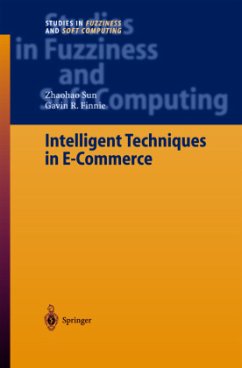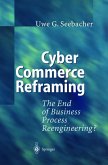This comprehensive and in-depth study on intelligent techniques in e-commerce offers a general introduction to case-based reasoning (CBR), e-commerce and intelligent agents. The task of using CBR is introduced by combining CBR with e-commerce and multiple agent simulation from both a mathematical, logical, and business, as well as an information-technology viewpoint. The book develops unified methods, models and architectures for multiagent e-commerce, in particular for multiagent brokerage. The final chapter, Integration of CBR and MAS in e-commerce, ties all the threads together. The material is covered in an easily-accessible way aiming at researchers and practitioners, lecturers and postgraduate students of e-commerce and e-business, information technology or artificial intelligence.
E-commerce has passed through a number of stages in the minds of most readers of the daily press. Initially it was the province of the specialist and considered almost irrelevant to the needs and activities of everyday life - companies looking for venture capital in this area had little if any chance of obtaining sufficient funds from the rather conservative investors who provided the only source of start-up capital. Then came the dot. com boom -and suddenly e-commerce was the most exciting topic possible! Venture capital was available from every possible source and almost any company with a . com in its name could be assured of instant funding on request. This boom was, inevitably, followed by the dot. com bust and the press wamed that the days of e-commerce were gone, perhaps never to return. This apparently confusing 'stages of growth' model is in reality nothing ofthe sort. E-commerce is simply the logical outcome of combining computers with tele communications networks. The astonishing changes which a global economy has brought with it are reflected in the changes to the way we do business which are increasingly synonymous with e-commerce. Indeed, the term e-commerce itself is coming to mean only the transaction-based component of e-business-'any process that a business organisation conducts over a computer-mediated network' as Thomas Mesenbourg ofthe U. S. Census Bureau said in 1999.
Hinweis: Dieser Artikel kann nur an eine deutsche Lieferadresse ausgeliefert werden.
E-commerce has passed through a number of stages in the minds of most readers of the daily press. Initially it was the province of the specialist and considered almost irrelevant to the needs and activities of everyday life - companies looking for venture capital in this area had little if any chance of obtaining sufficient funds from the rather conservative investors who provided the only source of start-up capital. Then came the dot. com boom -and suddenly e-commerce was the most exciting topic possible! Venture capital was available from every possible source and almost any company with a . com in its name could be assured of instant funding on request. This boom was, inevitably, followed by the dot. com bust and the press wamed that the days of e-commerce were gone, perhaps never to return. This apparently confusing 'stages of growth' model is in reality nothing ofthe sort. E-commerce is simply the logical outcome of combining computers with tele communications networks. The astonishing changes which a global economy has brought with it are reflected in the changes to the way we do business which are increasingly synonymous with e-commerce. Indeed, the term e-commerce itself is coming to mean only the transaction-based component of e-business-'any process that a business organisation conducts over a computer-mediated network' as Thomas Mesenbourg ofthe U. S. Census Bureau said in 1999.
Hinweis: Dieser Artikel kann nur an eine deutsche Lieferadresse ausgeliefert werden.








